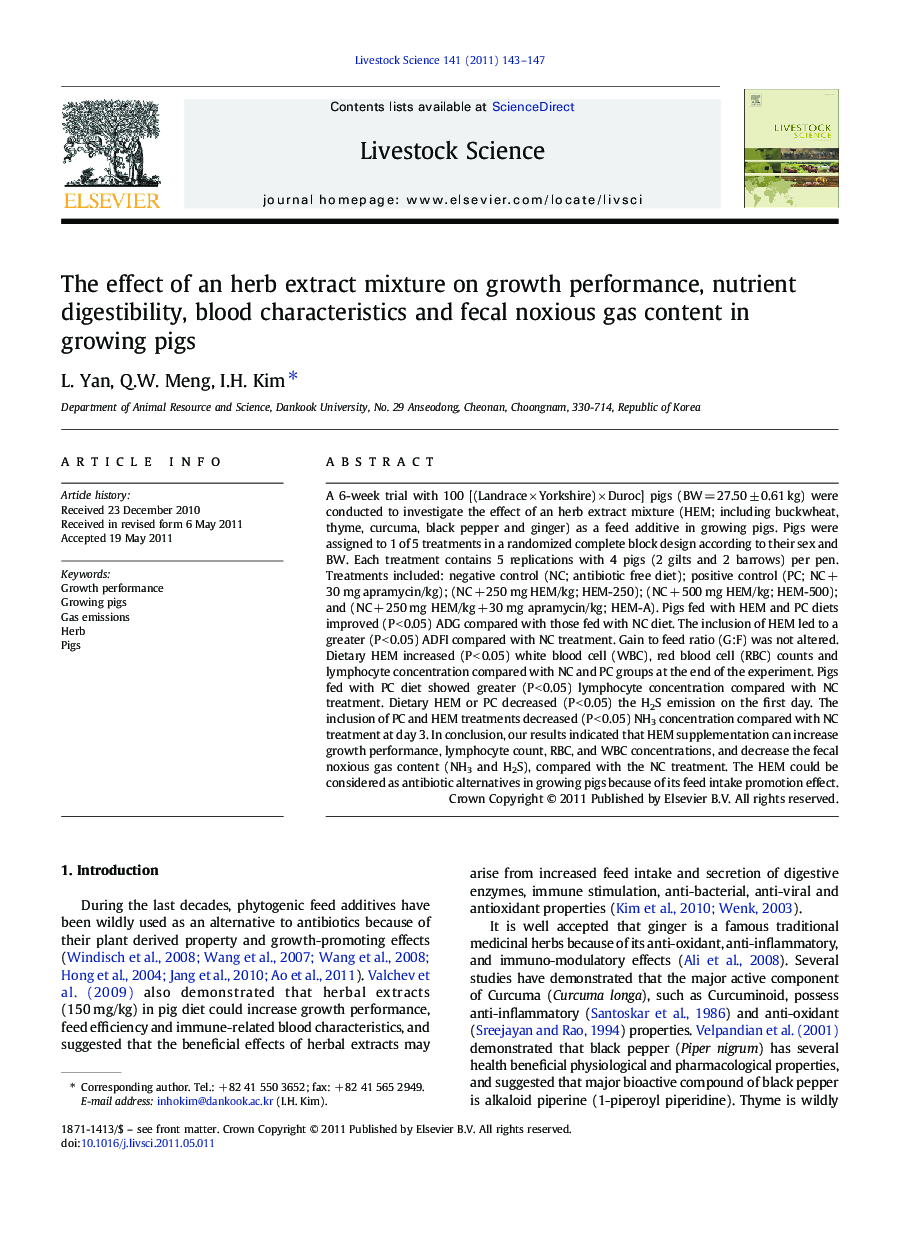| Article ID | Journal | Published Year | Pages | File Type |
|---|---|---|---|---|
| 5790634 | Livestock Science | 2011 | 5 Pages |
Abstract
A 6-week trial with 100 [(Landrace Ã Yorkshire) Ã Duroc] pigs (BW = 27.50 ± 0.61 kg) were conducted to investigate the effect of an herb extract mixture (HEM; including buckwheat, thyme, curcuma, black pepper and ginger) as a feed additive in growing pigs. Pigs were assigned to 1 of 5 treatments in a randomized complete block design according to their sex and BW. Each treatment contains 5 replications with 4 pigs (2 gilts and 2 barrows) per pen. Treatments included: negative control (NC; antibiotic free diet); positive control (PC; NC + 30 mg apramycin/kg); (NC + 250 mg HEM/kg; HEM-250); (NC + 500 mg HEM/kg; HEM-500); and (NC + 250 mg HEM/kg + 30 mg apramycin/kg; HEM-A). Pigs fed with HEM and PC diets improved (P < 0.05) ADG compared with those fed with NC diet. The inclusion of HEM led to a greater (P < 0.05) ADFI compared with NC treatment. Gain to feed ratio (G:F) was not altered. Dietary HEM increased (P < 0.05) white blood cell (WBC), red blood cell (RBC) counts and lymphocyte concentration compared with NC and PC groups at the end of the experiment. Pigs fed with PC diet showed greater (P < 0.05) lymphocyte concentration compared with NC treatment. Dietary HEM or PC decreased (P < 0.05) the H2S emission on the first day. The inclusion of PC and HEM treatments decreased (P < 0.05) NH3 concentration compared with NC treatment at day 3. In conclusion, our results indicated that HEM supplementation can increase growth performance, lymphocyte count, RBC, and WBC concentrations, and decrease the fecal noxious gas content (NH3 and H2S), compared with the NC treatment. The HEM could be considered as antibiotic alternatives in growing pigs because of its feed intake promotion effect.
Related Topics
Life Sciences
Agricultural and Biological Sciences
Animal Science and Zoology
Authors
L. Yan, Q.W. Meng, I.H. Kim,
